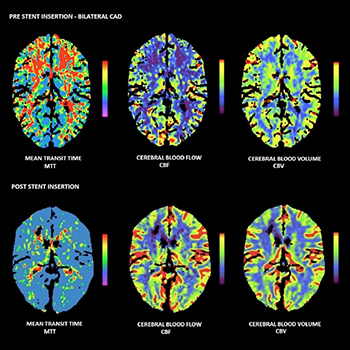Keywords
Stroke, carotid, carotid artery dissection, CT perfusion, stenting, endovascular
Abstract
Carotid artery dissection (CAD) is a major cause of stroke in those under age 45, accounting for around 20% of ischaemic events[1,2]. In the absence of known connective tissue disorders, most dissections are traumatic[2]. First-line management is comprised of antiplatelet or anticoagulation therapy, but many traumatic dissections progress despite this and carry the risk of long-term complications from embolism or stenosis[3].
We report a case of traumatic bilateral carotid dissection leading to progressive neurological symptoms and hypoperfusion on computed tomography perfusion (CTP), despite escalation in anticoagulation, which led to emergency carotid stenting.
References

Views: 2083
HTML downloads: 297
PDF downloads: 347
Untitled downloads: 0
Figure 1 downloads: 0
Figure 2 downloads: 0
Published:
2015-12-14
Issue:
Vol. 3 No. 1
(view)










